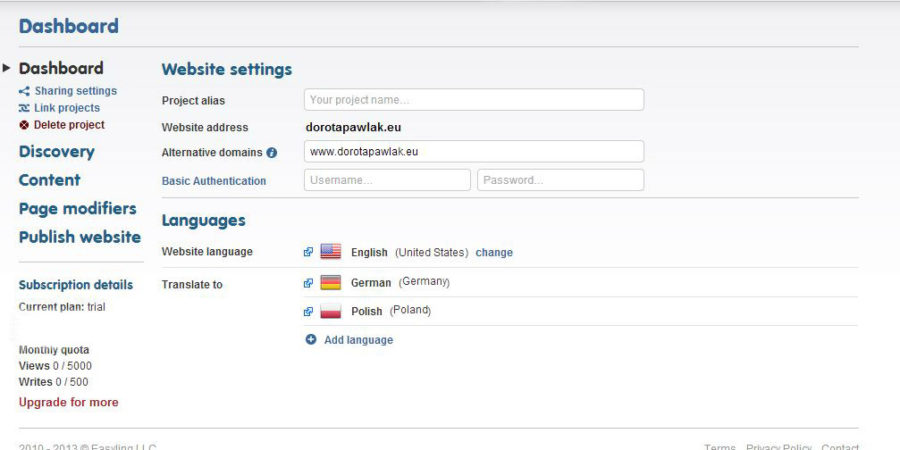Website translation: 4 alternative tools
Website translation and localisation is a complex process that requires attention to details, creativity and at least basic IT skills. To concentrate on the translatable text without having to deal with the code, you can use one of the tools developed for website translation. Apart from the most popular CAT-tools, such as Trados, memoQ or Wordfast, there are also other applications designed specifically for website translation and localisation with a (real time) preview of the translated website to compare the final results with the source pages. Below you can find description of the top 4 alternative website translation tools.
1) Easyling
This online tool for website translation helps to translate websites in their original layout and context with preview of the finished translation. It enables import and export of XLIFF files from other CAT-tools. Another interesting function includes automatic change detection on the websites, so if any new text appears on the source page, you can offer additional translation services to your customers. Easyling offers also an instant word count enabled after entering a website address. I tested it on my website and it turns out that the word count is not really precise – the count of the new words is correct, however the repetitions seem to include repetitions of the single words instead of segments. For example for my website I received a quote of 73% repetitions, whereas Trados recognised the repetition rate as 1,78%.

2) CatsCradle
It is a very easy and user-friendly application designed specifically for website translation. It offers real time preview of the translated website and shows hidden texts. Translators don’t have to worry about the code and can concentrate on proper localisation and see if the translation fits to the layout of the page. Other options include word count, glossaries, memories and charset converter.

3) Excitic
Similarly to CatsCradle, Excitic also provides a preview of the translated website and shows only translatable texts. Additionally, the software hides all technical data from editors and translators. It supports formats such as HTML, XML, XAML, PHP, NET and more. Another helpful function is a crash finder available only in the Enterprise version. Excitic includes also translation management system to update translation when new content appears online.

Lingobit Localizer extracts localizable resources from software, websites and applications and enables easy translation with real time preview. It supports variety of formats, from HTML and XML, to PHP and MySQL. Lingobit Localizer can work with multiple languages at the same time and offers options such as Pseudo-Translate, Automatic Validation or Exchange Wizard which ensures communication between translators and localisation managers. Its layout resembles the one of Excitic.

Have you used any of these tools? Or maybe you have other favourite applications alternative to the most popular CAT-tools? Share your experiences in a comment below!
